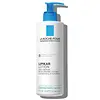What's inside
What's inside
 Key Ingredients
Key Ingredients

 Benefits
Benefits

 Concerns
Concerns

 Ingredients Side-by-side
Ingredients Side-by-side

Water
Skin ConditioningOlea Europaea Fruit Oil
MaskingGlycerin
HumectantDimethicone
EmollientPropylene Glycol
HumectantTriethanolamine
BufferingLimonene
PerfumingIsopropyl Palmitate
EmollientCitrus Aurantium Dulcis Oil
MaskingStearic Acid
CleansingParaffinum Liquidum
EmollientCetyl Alcohol
EmollientGlycine Soja Oil
EmollientCitrus Grandis Peel Oil
MaskingUrea
BufferingAspartic Acid
MaskingParaffin
PerfumingCarbomer
Emulsion StabilisingGlucose
HumectantFructose
HumectantGlyceryl Stearate
EmollientDimethiconol
EmollientSodium Lauroyl Oat Amino Acids
CleansingMyristic Acid
CleansingPalmitic Acid
EmollientAlanine
MaskingSucrose
HumectantVitreoscilla Ferment
Skin ConditioningXanthan Gum
EmulsifyingGlutamic Acid
HumectantDextrin
AbsorbentEthylhexylglycerin
Skin ConditioningHexyl Nicotinate
EmollientHexylene Glycol
EmulsifyingTocopherol
AntioxidantSodium Dehydroacetate
PreservativePhenoxyethanol
PreservativeLinalool
PerfumingCitral
PerfumingParfum
MaskingWater, Olea Europaea Fruit Oil, Glycerin, Dimethicone, Propylene Glycol, Triethanolamine, Limonene, Isopropyl Palmitate, Citrus Aurantium Dulcis Oil, Stearic Acid, Paraffinum Liquidum, Cetyl Alcohol, Glycine Soja Oil, Citrus Grandis Peel Oil, Urea, Aspartic Acid, Paraffin, Carbomer, Glucose, Fructose, Glyceryl Stearate, Dimethiconol, Sodium Lauroyl Oat Amino Acids, Myristic Acid, Palmitic Acid, Alanine, Sucrose, Vitreoscilla Ferment, Xanthan Gum, Glutamic Acid, Dextrin, Ethylhexylglycerin, Hexyl Nicotinate, Hexylene Glycol, Tocopherol, Sodium Dehydroacetate, Phenoxyethanol, Linalool, Citral, Parfum
Water
Skin ConditioningButyrospermum Parkii Butter
Skin ConditioningGlycerin
HumectantSorbitan Stearate
EmulsifyingParaffinum Liquidum
EmollientNiacinamide
SmoothingVitis Vinifera Seed Oil
EmollientAluminum Starch Octenylsuccinate
AbsorbentDimethicone
EmollientCera Alba
EmollientSorbitan Tristearate
EmulsifyingCarbomer
Emulsion StabilisingSodium Hydroxide
BufferingPoloxamer 338
EmulsifyingAmmonium Polyacryloyldimethyl Taurate
Emulsion StabilisingDisodium EDTA
Sucrose Cocoate
EmulsifyingCaprylyl Glycol
EmollientCitric Acid
BufferingT-Butyl Alcohol
PerfumingCetyl Palmitate
EmollientBHT
AntioxidantPentaerythrityl Tetra-Di-T-Butyl Hydroxyhydrocinnamate
AntioxidantChlorhexidine Digluconate
AntimicrobialWater, Butyrospermum Parkii Butter, Glycerin, Sorbitan Stearate, Paraffinum Liquidum, Niacinamide, Vitis Vinifera Seed Oil, Aluminum Starch Octenylsuccinate, Dimethicone, Cera Alba, Sorbitan Tristearate, Carbomer, Sodium Hydroxide, Poloxamer 338, Ammonium Polyacryloyldimethyl Taurate, Disodium EDTA, Sucrose Cocoate, Caprylyl Glycol, Citric Acid, T-Butyl Alcohol, Cetyl Palmitate, BHT, Pentaerythrityl Tetra-Di-T-Butyl Hydroxyhydrocinnamate, Chlorhexidine Digluconate
Ingredients Explained
These ingredients are found in both products.
Ingredients higher up in an ingredient list are typically present in a larger amount.
Carbomer is a polymer of acrylic acid. Its main role is to create a gel consistency.
A high amount of carbomer can cause pilling or balling up of products. Don't worry, most products contain 1% or less of carbomer.
Dimethicone is a type of synthetic silicone created from natural materials such as quartz.
What it does:
Dimethicone comes in different viscosities:
Depending on the viscosity, dimethicone has different properties.
Ingredients lists don't always show which type is used, so we recommend reaching out to the brand if you have questions about the viscosity.
This ingredient is unlikely to cause irritation because it does not get absorbed into skin. However, people with silicone allergies should be careful about using this ingredient.
Note: Dimethicone may contribute to pilling. This is because it is not oil or water soluble, so pilling may occur when layered with products. When mixed with heavy oils in a formula, the outcome is also quite greasy.
Learn more about DimethiconeGlycerin is already naturally found in your skin. It helps moisturize and protect your skin.
A study from 2016 found glycerin to be more effective as a humectant than AHAs and hyaluronic acid.
As a humectant, it helps the skin stay hydrated by pulling moisture to your skin. The low molecular weight of glycerin allows it to pull moisture into the deeper layers of your skin.
Hydrated skin improves your skin barrier; Your skin barrier helps protect against irritants and bacteria.
Glycerin has also been found to have antimicrobial and antiviral properties. Due to these properties, glycerin is often used in wound and burn treatments.
In cosmetics, glycerin is usually derived from plants such as soybean or palm. However, it can also be sourced from animals, such as tallow or animal fat.
This ingredient is organic, colorless, odorless, and non-toxic.
Glycerin is the name for this ingredient in American English. British English uses Glycerol/Glycerine.
Learn more about GlycerinParaffinum Liquidum is also known as liquid paraffin. It is a type of highly refined mineral oil.
Like other oils, Paraffinum Liquidum has emollient properties. Emollients help soothe and soften the skin. By creating a barrier to trap moisture within, emollients help keep your skin hydrated.
Paraffinum Liquidum does not irritate the skin and is non-comedogenic.
Learn more about Paraffinum LiquidumWater. It's the most common cosmetic ingredient of all. You'll usually see it at the top of ingredient lists, meaning that it makes up the largest part of the product.
So why is it so popular? Water most often acts as a solvent - this means that it helps dissolve other ingredients into the formulation.
You'll also recognize water as that liquid we all need to stay alive. If you see this, drink a glass of water. Stay hydrated!
Learn more about Water